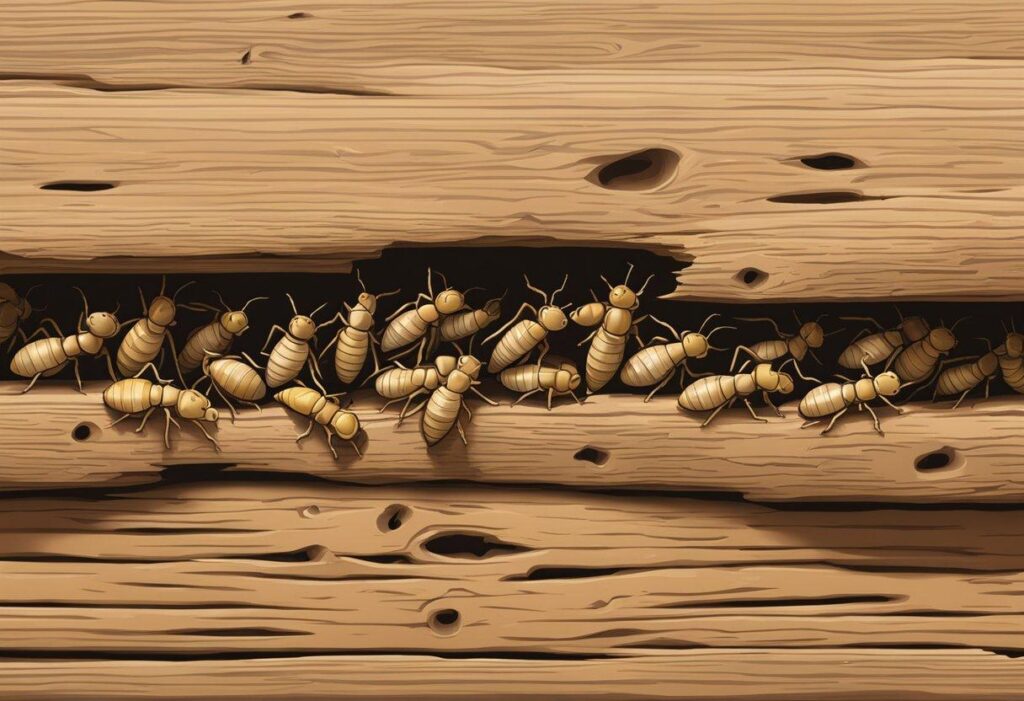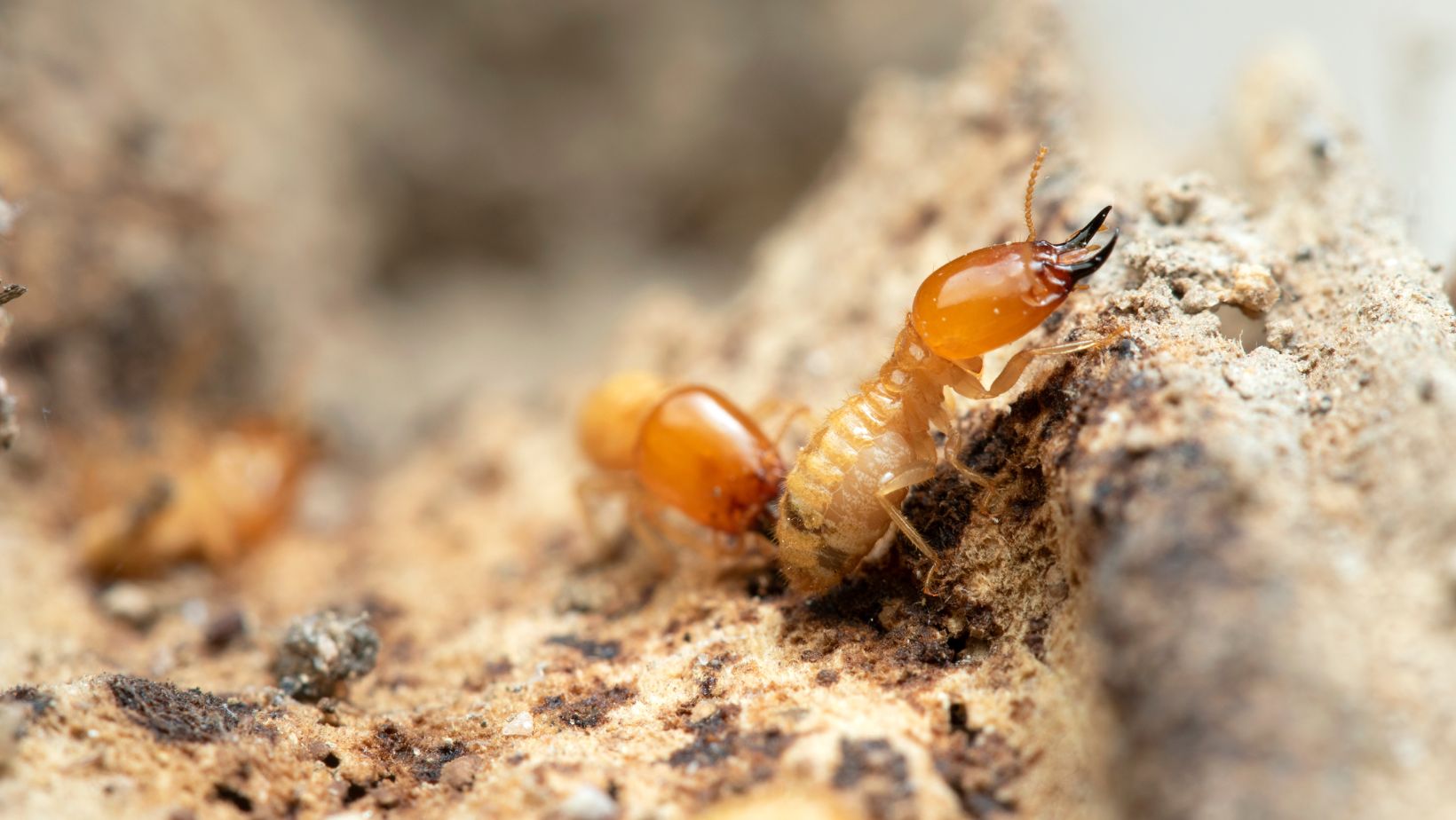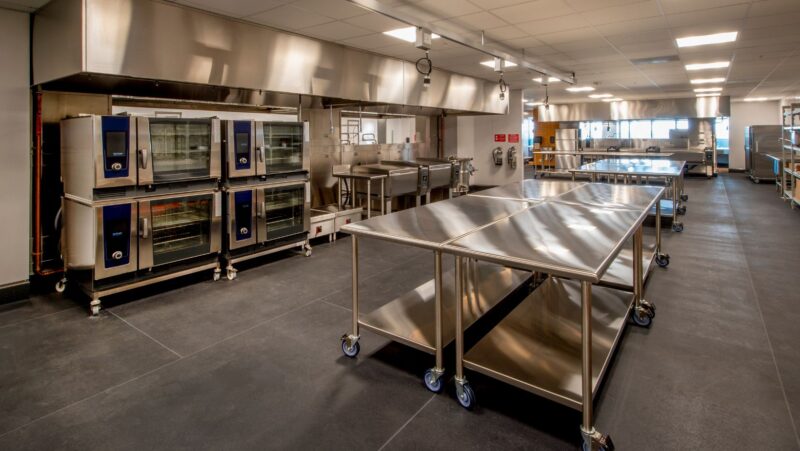
Termites are a common problem in Houston, and they can cause significant damage to homes and other structures. It’s important to be able to recognize the signs of termite damage so that you can take action before the problem gets out of hand. This article will provide an overview of the signs of termite control in Houston and what you can do to prevent and treat it.
In Houston homes, common signs of termite damage include wall damage such as warping or buckling, small holes or tunnels in wooden structures, exterior mud tubes, hollow-sounding wood, sagging floors or ceilings, and the presence of discarded wings or fecal pellets.
Rapid action is crucial if a termite infestation is suspected, as these pests can cause significant damage quickly, leading to costly repairs. Understanding the signs of different types of termites in Houston and preventive and treatment measures can help manage termite damage.
Understanding Termites in Houston
https://www.youtube.com/watch?v=2D6hD1iKQmc&embed=true
Termites are a significant problem for homeowners in Houston, Texas. There are three main types of termites that are commonly found in Houston: subterranean termites, dry-wood termites, and Formosan termites. These termites are known for their ability to form large colonies that can quickly cause extensive damage to wooden structures.
Termites live in colonies that consist of reproductives, queens, workers, and swarmers. The reproductives are responsible for producing eggs, while the queens are responsible for laying them. The workers are responsible for feeding and caring for the other members of the colony, while the swarmers are responsible for finding new locations to start new colonies.
Subterranean termites are the most common type of termite found in Houston. They live underground and create mud tubes to travel from their colony to their food source. Drywood termites, on the other hand, live in the wood they consume and do not require contact with the soil. Formosan termites are a more aggressive type of termite that can cause significant damage in a short amount of time.

Recognizing Signs of Termite Damage
https://www.youtube.com/watch?v=L4qNxzBkseI&embed=true
Termites are known to cause structural damage to wooden structures, including floors, walls, and windows. It is essential to recognize the signs of termite infestation to prevent significant damage to your property. Here are some visible signs of termite activity to look out for:
Mud Tubes
Mud tubes are a common sign of termite activity. These tubes are made of soil and termite saliva and are used by termites to travel from their nest to their food source. Mud tubes are usually found along walls, foundations, and other wooden structures.
Droppings and Frass
Termite droppings and frass are another sign of termite activity. These are small, pellet-like droppings that are usually found near termite nests or feeding sites. Frass is a mixture of termite droppings, saliva, and wood particles.
Rotting Wood
Termites feed on wood, and they can cause significant damage to wooden structures. Rotting wood is a sign of long-term termite damage. If you notice that your wooden structures are starting to decay, it might be a sign of termite damage.
Visible Signs
Termites can cause visible damage to wooden structures. You might notice that your walls, floors, or windows are starting to warp or buckle. This is a sign of termite damage.
Debris
Termites leave behind debris as they feed on wooden structures. You might notice small wood particles or other debris near termite nests or feeding sites.
Termite Infestations: How and Why They Occur
https://www.youtube.com/watch?v=WAw0aDz1UUA&embed=true
Termite infestations can cause significant damage to a Houston home or property, and they often go unnoticed until the damage is already done. Termites are attracted to cellulose, which is found in wood and other organic materials. They are also attracted to moisture, which can lead to moisture buildup and water damage in a home.
Termites typically live in the soil and travel through mud tubes to access a food source. Once they find a food source, they will continue to feed on it until it is gone. This is why termite infestations can cause so much damage to a home or property.
Moisture problems can also lead to termite infestations. If there is a leak in a home or property, it can lead to moisture buildup, which can attract termites. It is important to fix any leaks as soon as possible to prevent moisture problems.
In Houston, termite infestations are common due to the warm and humid climate. Homeowners should take steps to prevent termite infestations by keeping their homes dry, fixing any leaks, and removing any sources of moisture. They should also have their homes inspected regularly for signs of termite damage.

Conclusion
https://www.youtube.com/watch?v=1EQ6LfSOm1A&embed=true
Termites pose a significant problem for Houston homeowners due to the city’s warm and humid climate that favors their proliferation. These silent destroyers can cause extensive property damage if not identified and addressed promptly.
It’s essential for homeowners to recognize signs of termite infestation, act swiftly if an issue is suspected, and implement preventative measures like removing wood debris and ensuring proper drainage.
If termites are suspected, a professional pest control company specializing in termite identification and treatment should be contacted to assess the damage and devise a plan for pest elimination and future infestation prevention. With proactive measures and professional help, homeowners can safeguard their properties from termite destruction.










